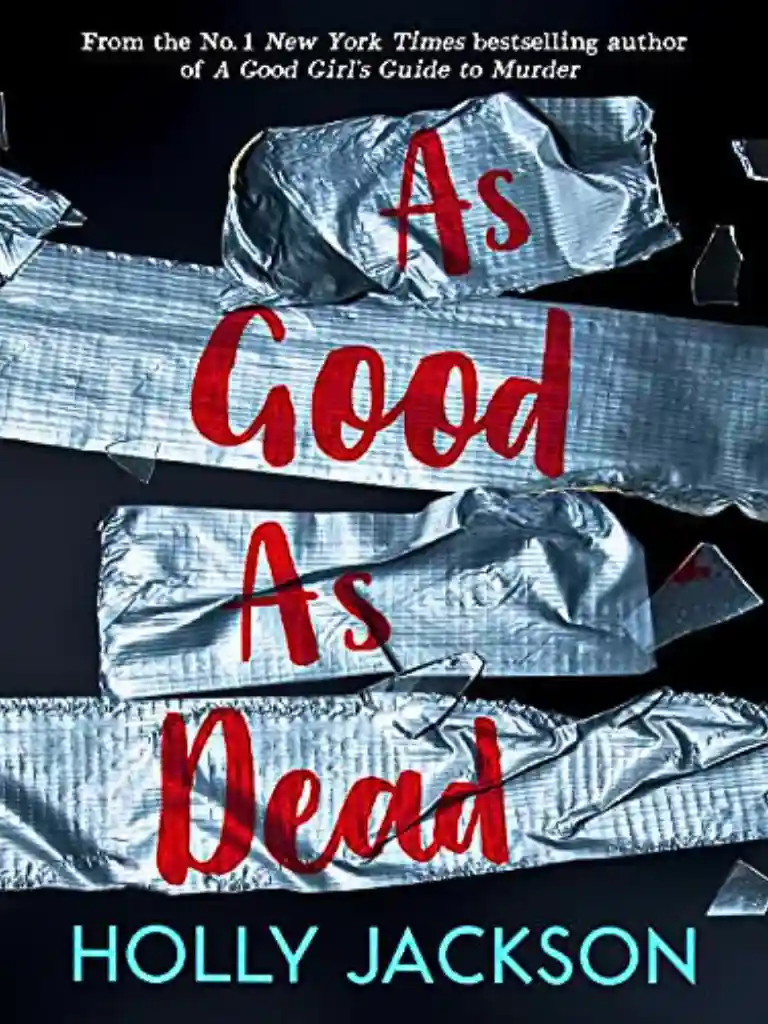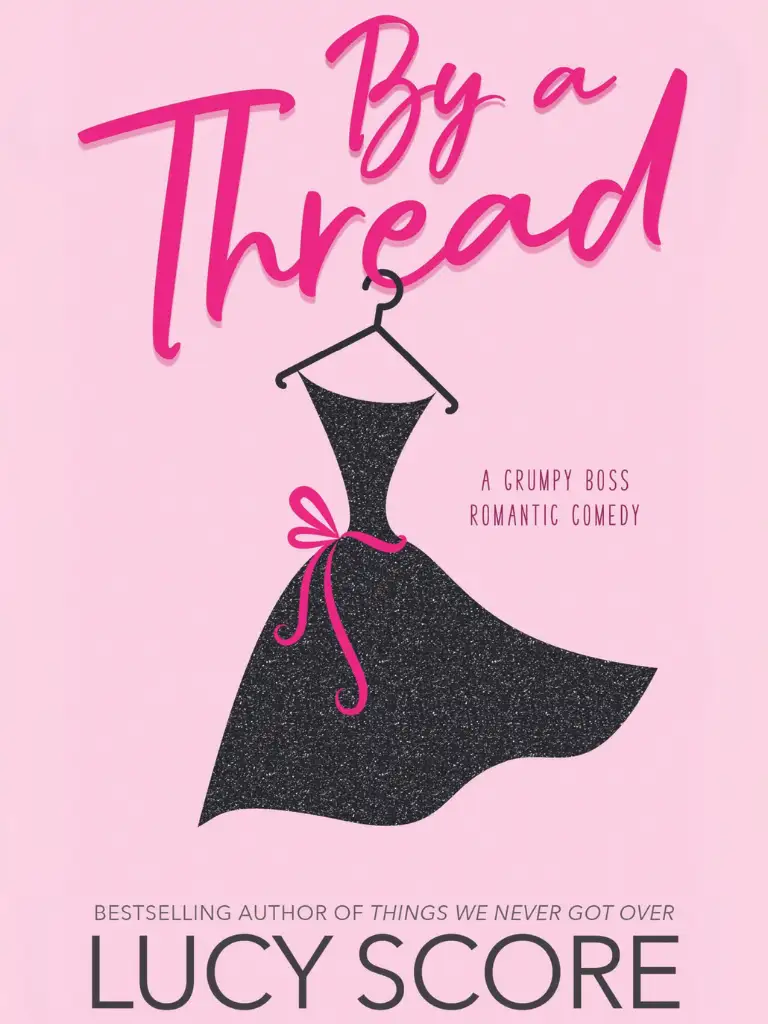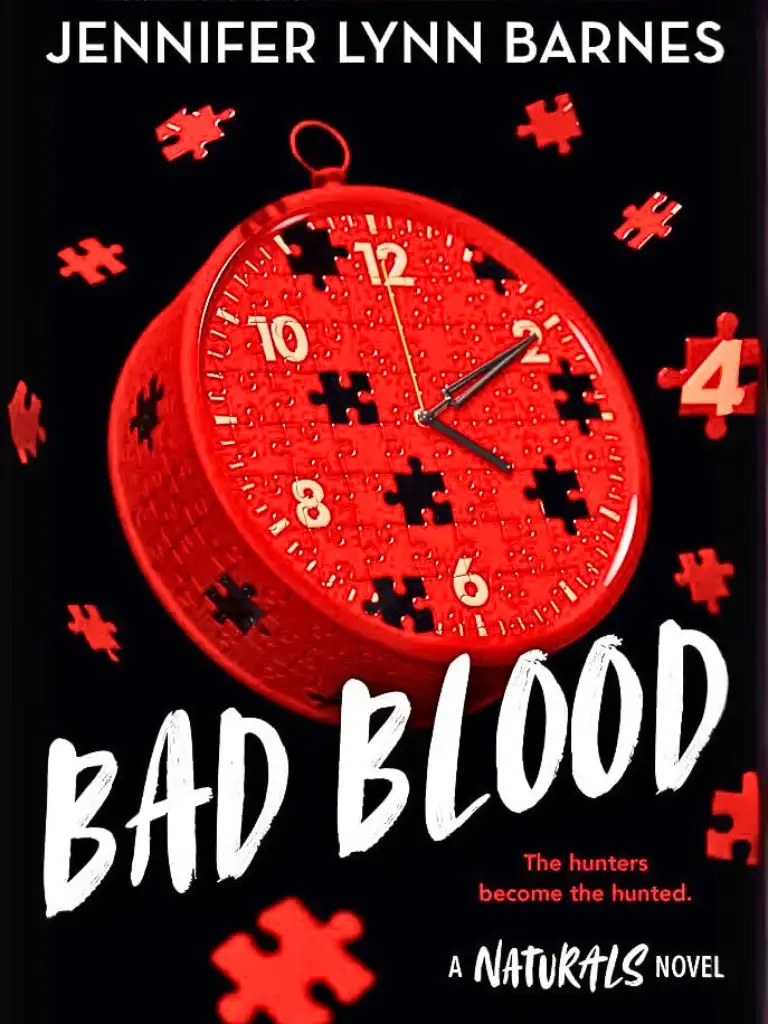WHAT’S LOVE GOT TO DO WITH IT?
Initiation, intimidation, stigmatization, isolation, helplessness and self-blame depend on a terrifying reality of child sexual abuse. “Don’t worry about things like that; that could never
happen in our family.” “How could you ever think of such a terrible thing?” “Don’t let me ever hear you say anything like that again!” The average child never asks and never tells.
—Roland Summit The Child Sexual Abuse Accommodation Syndrome
How do we organize our thinking with regard to individuals like Marilyn, Mary, and Kathy, and what can we do to help them? The
way we define their problems, our diagnosis, will determine how we approach their care. Such patients typically receive five or six different unrelated diagnoses in the course of their psychiatric treatment. If their doctors focus on their mood swings, they will be identified as bipolar and prescribed lithium or valproate. If the professionals are most impressed with their despair, they will be told they are suffering from major depression and given antidepressants. If the doctors focus on their restlessness and lack of attention, they may be categorized as ADHD and treated with Ritalin or other stimulants. And if the clinic staff happens to take a trauma history, and the patient actually volunteers the relevant information, he or she might receive the diagnosis of PTSD. None of these diagnoses will be completely off the mark, and none of them will begin to meaningfully describe who these patients are and what they suffer from.
Psychiatry, as a subspecialty of medicine, aspires to define mental illness as precisely as, let’s say, cancer of the pancreas, or streptococcal infection of the lungs. However, given the complexity of mind, brain, and human attachment systems, we have not come even close to achieving that sort of precision. Understanding what is “wrong” with people currently is more a question of the mind-set of the practitioner (and of what insurance companies will pay for) than of verifiable, objective facts.
The first serious attempt to create a systematic manual of psychiatric diagnoses occurred in 1980, with the release of the third edition of the Diagnostic and Statistical Manual of Mental Disorders, the official list of all mental diseases recognized by the American Psychiatric Association (APA). The preamble to the DSM-III warned explicitly that its categories were insufficiently precise to be used in forensic settings or for insurance purposes. Nonetheless it gradually became an instrument of enormous power: Insurance companies require a DSM diagnosis for reimbursement, until recently all research funding was based on DSM diagnoses, and academic programs are organized around DSM categories. DSM labels quickly found their way into the larger culture as well. Millions of people know that Tony Soprano suffered from panic attacks and depression and that Carrie Mathison of Homeland struggles with bipolar disorder. The manual has become a virtual industry that has earned the American Psychiatric Association well over $100 million. The question is: Has it provided comparable benefits for the patients it is meant to serve?
A psychiatric diagnosis has serious consequences: Diagnosis informs treatment, and getting the wrong treatment can have disastrous effects. Also, a diagnostic label is likely to attach to people for the rest of their lives and have a profound influence on how they define themselves. I have met countless patients who told me that they “are” bipolar or borderline or that they “have” PTSD, as if they had been sentenced to remain in an underground dungeon for the rest of their lives, like the Count of Monte Cristo.
None of these diagnoses takes into account the unusual talents that many of our patients develop or the creative energies they have mustered to survive. All too often diagnoses are mere tallies of symptoms, leaving patients such as Marilyn, Kathy, and Mary likely to be viewed as out-of-control women who need to be straightened out.
The dictionary defines diagnosis as “a. The act or process of identifying or determining the nature and cause of a disease or injury through evaluation of patient history, examination, and review of laboratory data. b. The opinion derived from such an evaluation.” In this chapter, and the next, I will discuss the chasm between official diagnoses and what our patients actually suffer from and discuss how my colleagues and I have tried to change the way patients with chronic trauma histories are diagnosed.
HOW DO YOU TAKE A TRAUMA HISTORY?
In 1985 I started to collaborate with psychiatrist Judith Herman, whose first book, Father-Daughter Incest, had recently been published. We were both working at Cambridge Hospital (one of Harvard’s teaching hospitals) and, sharing an interest in how trauma had affected the lives of our patients, we began to meet regularly and compare notes. We were struck by how many of our patients who were diagnosed with borderline personality disorder (BPD) told us horror stories about their childhoods. BPD is marked by clinging but highly unstable relationships, extreme mood swings, and self-destructive behavior, including self-mutilation and repeated suicide attempts. In order to uncover whether there was, in fact, a relationship between childhood trauma and BPD, we designed a formal scientific study and sent off a grant proposal to the National Institutes of Health. It was rejected.
Undeterred, Judy and I decided to finance the study ourselves, and we found an ally in Chris Perry, the director of research at Cambridge Hospital, who was funded by the National Institutes of Mental Health to study BPD and other near neighbor diagnoses, so called personality disorders, in patients recruited from the Cambridge Hospital. He had collected volumes of valuable data on these subjects but had never inquired about childhood abuse and neglect. Even though he did not hide his skepticism about our proposal, he was very generous to us and arranged for us to interview fifty-five patients from the hospital’s outpatient department, and he agreed to compare our findings with records in the large database he had already collected.
The first question Judy and I faced was: How do you take a trauma history? You can’t ask a patient point blank: “Were you molested as a kid?” or “Did your father beat you up?” How many would trust a
complete stranger with such delicate information? Keeping in mind that people universally feel ashamed about the traumas they have experienced, we designed an interview instrument, the Traumatic Antecedents Questionnaire (TAQ). The interview started with a series of simple questions: “Where do you live, and who do you live with?”; “Who pays the bills and who does the cooking and cleaning?” It progressed gradually to more revealing questions: “Who do you rely on in your daily life?” As in: When you’re sick, who does the shopping or takes you to the doctor? “Who do you talk to when you are upset?” In other words, who provides you with emotional and practical support?
Some patients gave us surprising answers: “my dog” or “my therapist”— or “nobody.”
We then asked similar questions about their childhood: Who lived in the household? How often did you move? Who was your primary caretaker? Many of the patients reported frequent relocations that required them to change schools in the middle of the year. Several had primary caregivers who had gone to jail, been placed in a mental hospital, or joined the military. Others had moved from foster home to foster home or had lived with a string of different relatives.
The next section of the questionnaire addressed childhood relationships: “Who in your family was affectionate to you?” “Who treated you as a special person?” This was followed by a critical question
—one that, to my knowledge, had never before been asked in a scientific study: “Was there anybody who you felt safe with growing up?” One out of four patients we interviewed could not recall anyone they had felt safe with as a child. We checked “nobody” on our work sheets and did not comment, but we were stunned. Imagine being a child and not having a source of safety, making your way into the world unprotected and unseen.
The questions continued: “Who made the rules at home and enforced the discipline?” “How were kids kept in line—by talking, scolding, spanking, hitting, locking you up?” “How did your parents solve their disagreements?” By then the floodgates had usually opened, and many patients were volunteering detailed information about their childhoods. One woman had witnessed her little sister being raped; another told us she’d had her first sexual experience at age eight—with her grandfather. Men and women reported lying awake at night listening to furniture crashing and parents screaming; a young man had come
down to the kitchen and found his mother lying in a pool of blood. Others talked about not being picked up at elementary school or coming home to find an empty house and spending the night alone. One woman who made her living as a cook had learned to prepare meals for her family after her mother was jailed on a drug conviction. Another had been nine when she grabbed and steadied the car’s steering wheel because her drunken mother was swerving down a four-lane highway during rush hour.
Our patients did not have the option to run away or escape; they had nobody to turn to and no place to hide. Yet they somehow had to manage their terror and despair. They probably went to school the next morning and tried to pretend that everything was fine. Judy and I realized that the BPD group’s problems—dissociation, desperate clinging to whomever might be enlisted to help—had probably started off as ways of dealing with overwhelming emotions and inescapable brutality.
After our interviews Judy and I met to code our patients’ answers— that is, to translate them into numbers for computer analysis, and Chris Perry then collated them with the extensive information on these patients he had stored on Harvard’s mainframe computer. One Saturday morning in April he left us a message asking us to come to his office. There we found a huge stack of printouts, on top of which Chris had placed a Gary Larson cartoon of a group of scientists studying dolphins and being puzzled by “those strange ‘aw blah es span yol’ sounds.” The data had convinced him that unless you understand the language of trauma and abuse, you cannot really understand BPD.
As we later reported in the American Journal of Psychiatry, 81 percent of the patients diagnosed with BPD at Cambridge Hospital reported severe histories of child abuse and/or neglect; in the vast majority the abuse began before age seven. This finding was particularly important because it suggested that the impact of abuse depends, at least in part, on the age at which it begins. Later research by Martin Teicher at McLean Hospital showed that different forms of abuse have different impacts on various brain areas at different stages of development. Although numerous studies have since replicated our findings, I still regularly get scientific papers to review that say things like “It has been hypothesized that borderline patients may have histories of childhood trauma.” When does a hypothesis become a scientifically established fact?
Our study clearly supported the conclusions of John Bowlby.
When children feel pervasively angry or guilty or are chronically frightened about being abandoned, they have come by such feelings honestly; that is because of experience. When, for example, children fear abandonment, it is not in counterreaction to their intrinsic homicidal urges; rather, it is more likely because they have been abandoned physically or psychologically, or have been repeatedly threatened with abandonment. When children are pervasively filled with rage, it is due to rejection or harsh treatment. When children experience intense inner conflict regarding their angry feelings, this is likely because expressing them may be forbidden or even dangerous.
Bowlby noticed that when children must disown powerful experiences they have had, this creates serious problems, including “chronic distrust of other people, inhibition of curiosity, distrust of their own senses, and the tendency to find everything unreal.” As we will see, this has important implications for treatment.
Our study expanded our thinking beyond the impact of particular
horrendous events, the focus of the PTSD diagnosis, to look at the longterm effects of brutalization and neglect in caregiving relationships. It also raised another critical question: What therapies are effective for people with a history of abuse, particularly those who feel chronically suicidal and deliberately hurt themselves?
SELF-HARM
During my training I was called from my bed at around 3:00 a.m. three nights in a row to stitch up a woman who had slashed her neck with whatever sharp object she could lay her hands on. She told me, somewhat triumphantly, that cutting herself made her feel much better. Ever since then I’d asked myself why. Why do some people deal with being upset by playing three sets of tennis or drinking a stiff martini, while others carve their arms with razor blades? Our study showed that having a history of childhood sexual and physical abuse was a strong
predictor of repeated suicide attempts and self-cutting. I wondered if their suicidal ruminations had started when they were very young and whether they had found comfort in plotting their escape by hoping to die or doing damage to themselves. Does inflicting harm on oneself begin as a desperate attempt to gain some sense of control?
Chris Perry’s database had follow-up information on all the patients who were treated in the hospital’s outpatient clinics, including reports on suicidality and self-destructive behavior. After three years of therapy approximately two-thirds of the patients had markedly improved. Now the question was, which members of the group had benefited from therapy and which had continued to feel suicidal and self-destructive?
Comparing the patients’ ongoing behavior with our TAQ interviews provided some answers. The patients who remained self-destructive had told us that they did not remember feeling safe with anybody as a child; they had reported being abandoned, shuttled from place to place, and generally left to their own devices.
I concluded that, if you carry a memory of having felt safe with somebody long ago, the traces of that earlier affection can be reactivated in attuned relationships when you are an adult, whether these occur in daily life or in good therapy. However, if you lack a deep memory of feeling loved and safe, the receptors in the brain that respond to human kindness may simply fail to develop. If that is the case, how can people learn to calm themselves down and feel grounded in their bodies? Again, this has important implications for therapy, and I’ll return to this question throughout part 5, on treatment.
THE POWER OF DIAGNOSIS
Our study also confirmed that there was a traumatized population quite distinct from the combat soldiers and accident victims for whom the PTSD diagnosis had been created. People like Marilyn and Kathy, as well as the patients Judy and I had studied, and the kids in the outpatient clinic at MMHC that I described in chapter 7, do not necessarily remember their traumas (one of the criteria for the PTSD diagnosis) or at least are not preoccupied with specific memories of their abuse, but they continue to behave as if they were still in danger. They go from one extreme to the other; they have trouble staying on task, and they continually lash out against themselves and others. To some degree their
problems do overlap with those of combat soldiers, but they are also very different in that their childhood trauma has prevented them from developing some of the mental capacities that adult soldiers possessed before their traumas occurred.
After we realized this, a group of us went to see Robert Spitzer, who, after having guided the development of the DSM-III, was in the process of revising the manual. He listened carefully to what we told him. He told us it was likely that clinicians who spend their days treating a particular patient population are likely to develop considerable expertise in understanding what ails them. He suggested that we do a study, a so-called field trial, to compare the problems of different groups of traumatized individuals. Spitzer put me in charge of the project.
First we developed a rating scale that incorporated all the different
trauma symptoms that had been reported in the scientific literature, then we interviewed 525 adult patients at five sites around the country to see if particular populations suffered from different constellations of problems. Our populations fell into three groups: those with histories of childhood physical or sexual abuse by caregivers; recent victims of domestic violence; and people who had recently been through a natural disaster.
There were clear differences among these groups, particularly those on the extreme ends of the spectrum: victims of child abuse and adults who had survived natural disasters. The adults who had been abused as children often had trouble concentrating, complained of always being on edge, and were filled with self-loathing. They had enormous trouble negotiating intimate relationships, often veering from indiscriminate, high-risk, and unsatisfying sexual involvements to total sexual shutdown. They also had large gaps in their memories, often engaged in self-destructive behaviors, and had a host of medical problems. These symptoms were relatively rare in the survivors of natural disasters.
Each major diagnosis in the DSM had a workgroup responsible for suggesting revisions for the new edition. I presented the results of the field trial to our DSM-IV PTSD work group, and we voted nineteen to two to create a new trauma diagnosis for victims of interpersonal trauma: “Disorders of Extreme Stress, Not Otherwise Specified” (DESNOS), or “Complex PTSD” for short. We then eagerly anticipated the publication of the DSM-IV in May 1994. But much to our surprise the
diagnosis that our work group had overwhelmingly approved did not appear in the final product. None of us had been consulted.
This was a tragic exclusion. It meant that large numbers of patients could not be accurately diagnosed and that clinicians and researchers would be unable to scientifically develop appropriate treatments for them. You cannot develop a treatment for a condition that does not exist. Not having a diagnosis now confronts therapists with a serious dilemma: How do we treat people who are coping with the fall-out of abuse, betrayal and abandonment when we are forced to diagnose them with depression, panic disorder, bipolar illness, or borderline personality, which do not really address what they are coping with?
The consequences of caretaker abuse and neglect are vastly more common and complex than the impact of hurricanes or motor vehicle accidents. Yet the decision makers who determined the shape of our diagnostic system decided not to recognize this evidence. To this day, after twenty years and four subsequent revisions, the DSM and the entire system based on it fail victims of child abuse and neglect—just as they ignored the plight of veterans before PTSD was introduced back in 1980.
THE HIDDEN EPIDEMIC
How do you turn a newborn baby with all its promise and infinite capacities into a thirty-year-old homeless drunk? As with so many great discoveries, internist Vincent Felitti came across the answer to this question accidentally.
In 1985 Felitti was chief of Kaiser Permanente’s Department of Preventive Medicine in San Diego, which at the time was the largest medical screening program in the world. He was also running an obesity clinic that used a technique called “supplemented absolute fasting” to bring about dramatic weight loss without surgery. One day a twenty-eight-year-old nurse’s aide showed up in his office. Felitti accepted her claim that obesity was her principal problem and enrolled her in the program. Over the next fifty-one weeks her weight dropped from 408 pounds to 132 pounds.
However, when Felitti next saw her a few months later, she had regained more weight than he thought was biologically possible in such a short time. What had happened? It turned out that her newly svelte body had attracted a male coworker, who started to flirt with her and then
suggested sex. She went home and began to eat. She stuffed herself during the day and ate while sleepwalking at night. When Felitti probed this extreme reaction, she revealed a lengthy incest history with her grandfather.
This was only the second case of incest Felitti had encountered in his twenty-three-year medical practice, and yet about ten days later he heard a similar story. As he and his team started to inquire more closely, they were shocked to discover that most of their morbidly obese patients had been sexually abused as children. They also uncovered a host of other family problems.
In 1990 Felitti went to Atlanta to present data from the team’s first 286 patient interviews at a meeting of the North American Association for the Study of Obesity. He was stunned by the harsh response of some experts: Why did he believe such patients? Didn’t he realize they would fabricate any explanation for their failed lives? However, an epidemiologist from the Centers for Disease Control and Prevention (CDC) encouraged Felitti to start a much larger study, drawing on a general population, and invited him to meet with a small group of researchers at the CDC. The result was the monumental investigation of Adverse Childhood Experiences (now know at the ACE study), a collaboration between the CDC and Kaiser Permanente, with Robert Anda, MD, and Vincent Felitti, MD, as co–principal investigators.
More than fifty thousand Kaiser patients came through the Department of Preventive Medicine annually for a comprehensive evaluation, filling out an extensive medical questionnaire in the process. Felitti and Anda spent more than a year developing ten new questions covering carefully defined categories of adverse childhood experiences, including physical and sexual abuse, physical and emotional neglect, and family dysfunction, such as having had parents who were divorced, mentally ill, addicted, or in prison. They then asked 25,000 consecutive patients if they would be willing to provide information about childhood events; 17,421 said yes. Their responses were then compared with the detailed medical records that Kaiser kept on all patients.
The ACE study revealed that traumatic life experiences during childhood and adolescence are far more common than expected. The study respondents were mostly white, middle class, middle aged, well educated, and financially secure enough to have good medical insurance,
and yet only one-third of the respondents reported no adverse childhood experiences.
One out of ten individuals responded yes to the question “Did a parent or other adult in the household often or very often swear at you, insult you, or put you down?”
More than a quarter responded yes to the questions “Did one of your parents often or very often push, grab, slap, or throw something at you?” and “Did one of your parents often or very often hit you so hard that you had marks or were injured?” In other words, more than a quarter of the U.S. population is likely to have been repeatedly physically abused as a child.
To the questions “Did an adult or person at least 5 years older ever have you touch their body in a sexual way?” and “Did an adult or person at least 5 years older ever attempt oral, anal, or vaginal intercourse with you?” 28 percent of women and 16 percent of men responded affirmatively.
One in eight people responded positively to the questions: “As a child, did you witness your mother sometimes, often, or very often pushed, grabbed, slapped, or had something thrown at her?” “As a child, did you witness your mother sometimes, often, or very often kicked, bitten, hit with a fist, or hit with something hard?”
Each yes answer was scored as one point, leading to a possible ACE score ranging from zero to ten. For example, a person who experienced frequent verbal abuse, who had an alcoholic mother, and whose parents divorced would have an ACE score of three. Of the two-thirds of respondents who reported an adverse experience, 87 percent scored two or more. One in six of all respondents had an ACE score of four or higher.
In short, Felitti and his team had found that adverse experiences are interrelated, even though they’re usually studied separately. People typically don’t grow up in a household where one brother is in prison but everything else is fine. They don’t live in families where their mother is regularly beaten but life is otherwise hunky-dory. Incidents of abuse are
never stand-alone events. And for each additional adverse experience reported, the toll in later damage increases.
Felitti and his team found that the effects of childhood trauma first become evident in school. More than half of those with ACE scores of four or higher reported having learning or behavioral problems, compared with 3 percent of those with a score of zero. As the children matured, they didn’t “outgrow” the effects of their early experiences. As Felitti notes, “Traumatic experiences are often lost in time and concealed by shame, secrecy, and social taboo,” but the study revealed that the impact of trauma pervaded these patients’ adult lives. For example, high ACE scores turned out to correlate with higher workplace absenteeism, financial problems, and lower lifetime income.
When it came to personal suffering, the results were devastating. As the ACE score rises, chronic depression in adulthood also rises dramatically. For those with an ACE score of four or more, its prevalence is 66 percent in women and 35 percent in men, compared with an overall rate of 12 percent in those with an ACE score of zero.
The likelihood of being on antidepressant medication or prescription painkillers also rose proportionally. As Felitti has pointed out, we may be treating today experiences that happened fifty years ago—at ever-increasing cost. Antidepressant drugs and painkillers constitute a significant portion of our rapidly rising national health-care expenditures. (Ironically, research has shown that depressed patients without prior histories of abuse or neglect tend to respond much better to antidepressants than patients with those backgrounds.)
Self-acknowledged suicide attempts rise exponentially with ACE scores. From a score of zero to a score of six there is about a 5,000 percent increased likelihood of suicide attempts. The more isolated and unprotected a person feels, the more death will feel like the only escape. When the media report an environmental link to a 30 percent increase in the risk of some cancer, it is headline news, yet these far more dramatic figures are overlooked.
As part of their initial medical evaluation, study participants were asked, “Have you ever considered yourself to be an alcoholic?” People with an ACE score of four were seven times more likely to be alcoholic than adults with a score of zero. Injection drug use increased exponentially: For those with an ACE score of six or more, the
likelihood of IV drug use was 4,600 percent greater than in those with a score of zero.
Women in the study were asked about rape during adulthood. At an ACE score of zero, the prevalence of rape was 5 percent; at a score of four or more it was 33 percent. Why are abused or neglected girls so much more likely to be raped later in life? The answers to this question have implications far beyond rape. For example, numerous studies have shown that girls who witness domestic violence while growing up are at much higher risk of ending up in violent relationships themselves, while for boys who witness domestic violence, the risk that they will abuse their own partners rises sevenfold. More than 12 percent of study participants had seen their mothers being battered.
The list of high-risk behaviors predicted by the ACE score included smoking, obesity, unintended pregnancies, multiple sexual partners, and sexually transmitted diseases. Finally, the toll of major health problems was striking: Those with an ACE score of six or above had a 15 percent or greater chance than those with an ACE score of zero of currently suffering from any of the ten leading causes of death in the United States, including chronic obstructive pulmonary disease (COPD), ischemic heart disease, and liver disease. They were twice as likely to suffer from cancer and four times as likely to have emphysema. The ongoing stress on the body keeps taking its toll.
WHEN PROBLEMS ARE REALLY SOLUTIONS
Twelve years after he originally treated her, Felitti again saw the woman whose dramatic weight loss and gain had started him on his quest. She told him that she’d subsequently had bariatric surgery but that after she’d lost ninety-six pounds she’d become suicidal. It had taken five psychiatric hospitalizations and three courses of electroshock to control her suicidality. Felitti points out that obesity, which is considered a major public health problem, may in fact be a personal solution for many.
Consider the implications: If you mistake someone’s solution for a problem to be eliminated, not only are they likely to fail treatment, as often happens in addiction programs, but other problems may emerge.
One female rape victim told Felitti, “Overweight is overlooked, and that’s the way I need to be.” Weight can protect men, as well. Felitti recalls two guards at a state prison in his obesity program. They
promptly regained the weight they had lost, because they felt a lot safer being the biggest guy on the cellblock. Another male patient became obese after his parents divorced and he moved in with his violent alcoholic grandfather. He explained: “It wasn’t that I ate because I was hungry and all of that. It was just a place for me to feel safe. All the way from kindergarten I used to get beat up all the time. When I got the weight on it didn’t happen anymore.”
The ACE study group concluded: “Although widely understood to be harmful to health, each adaptation [such as smoking, drinking, drugs, obesity] is notably difficult to give up. Little consideration is given to the possibility that many long-term health risks might also be personally beneficial in the short term. We repeatedly hear from patients of the benefits of these ‘health risks.’ The idea of the problem being a solution, while understandably disturbing to many, is certainly in keeping with the fact that opposing forces routinely coexist in biological systems. . . .
What one sees, the presenting problem, is often only the marker for the real problem, which lies buried in time, concealed by patient shame, secrecy and sometimes amnesia—and frequently clinician discomfort.”
CHILD ABUSE: OUR NATION’S LARGEST PUBLIC HEALTH PROBLEM
The first time I heard Robert Anda present the results of the ACE study, he could not hold back his tears. In his career at the CDC he had previously worked in several major risk areas, including tobacco research and cardiovascular health. But when the ACE study data started to appear on his computer screen, he realized that they had stumbled upon the gravest and most costly public health issue in the United States: child abuse. He had calculated that its overall costs exceeded those of cancer or heart disease and that eradicating child abuse in America would reduce the overall rate of depression by more than half, alcoholism by two-thirds, and suicide, IV drug use, and domestic violence by three-quarters. It would also have a dramatic effect on workplace performance and vastly decrease the need for incarceration.
When the surgeon general’s report on smoking and health was published in 1964, it unleashed a decades-long legal and medical campaign that has changed daily life and long-term health prospects for millions. The number of American smokers fell from 42 percent of
adults in 1965 to 19 percent in 2010, and it is estimated that nearly 800,000 deaths from lung cancer were prevented between 1975 and 2000.
The ACE study, however, has had no such effect. Follow-up studies
and papers are still appearing around the world, but the day-to-day reality of children like Marilyn and the children in outpatient clinics and residential treatment centers around the country remains virtually the same. Only now they receive high doses of psychotropic agents, which makes them more tractable but which also impairs their ability to feel pleasure and curiosity, to grow and develop emotionally and intellectually, and to become contributing members of society.








